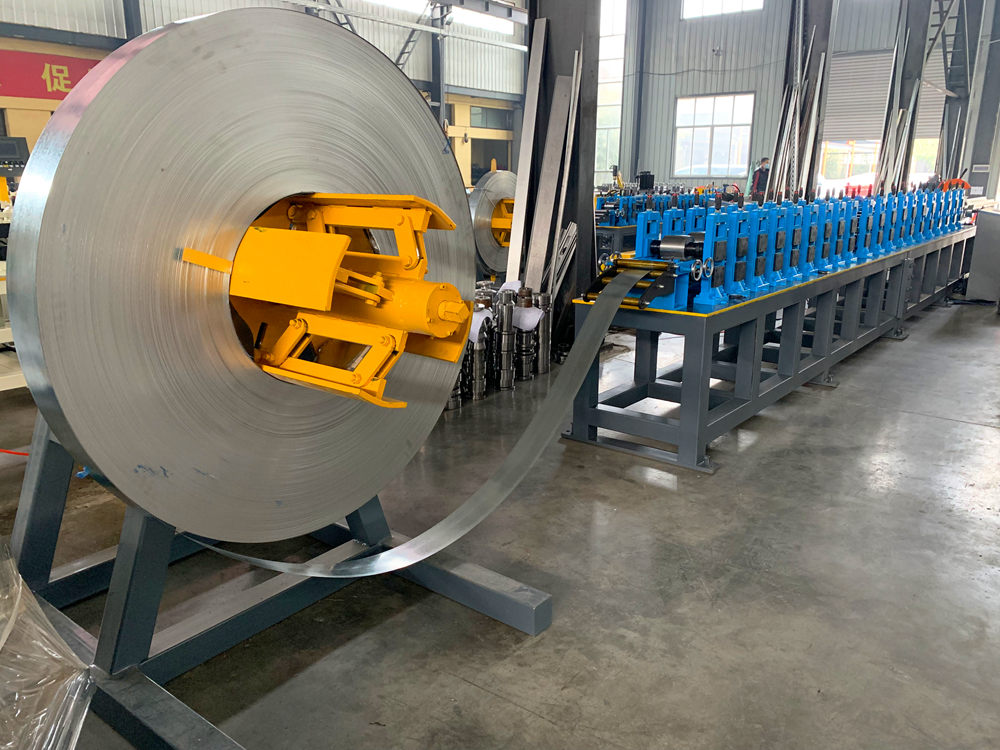Supermarket Shelf Layer and Back Panel Roll Forming Machine Revolutionizing Retail Storage Solutions
In the dynamic world of retail, efficient storage solutions are paramount. One of the innovations making waves in this sector is the supermarket shelf layer and back panel roll forming machine. This cutting-edge equipment is primarily designed to streamline the production of supermarket shelving systems, ensuring that stores can maximize their space while effectively displaying products.
Understanding Roll Forming Technology
Roll forming is a continuous bending operation in which a long strip of sheet metal is fed through consecutive pairs of rollers, each performing a specific role in the shaping process. This method is particularly advantageous in producing parts with uniform cross-sections. The supermarket shelf layer and back panel roll forming machine employs this technology to create sturdy and lightweight components that are essential for modern retail environments.
The production process begins with a flat metal sheet that is fed into the machine. The rollers efficiently shape the metal into precise configurations for shelf layers and back panels. The result is a product that not only meets the structural integrity required for supporting goods but also fits seamlessly into the aesthetic demands of retail spaces.
Advantages of Using Roll Forming Machines
1. Efficiency and Speed One of the most significant benefits of using a roll forming machine is its high production speed. These machines can produce long runs of uniform products with minimal setup time, thus reducing labour costs and increasing output. For supermarkets that require consistent shelving solutions, this efficiency translates directly into cost savings.

2. Customization Options Supermarkets often vary in size and design, necessitating customizable shelving solutions. Roll forming machines allow for a variety of configurations, sizes, and thicknesses, enabling retailers to tailor their shelving according to specific needs. This adaptability is crucial in an industry where visual appeal and operational efficiency are key to attracting customers.
3. Durability and Strength The materials used in roll forming, typically steel or aluminum, provide excellent strength-to-weight ratios. The shelves and back panels produced through this method offer the durability necessary to support heavy products without sagging or bending. This longevity ensures that supermarkets can maintain their displays and reduce the frequency of replacements.
4. Eco-Friendly Manufacturing As sustainability becomes a focal point for many businesses, the manufacturing processes involving roll forming are relatively eco-friendly. The process generates less waste compared to traditional methods, and the materials used can often be recycled, contributing to a more sustainable retail environment.
5. Reduced Maintenance Unlike traditional shelving systems that may require regular upkeep, shelves produced from roll forming are designed to withstand the wear and tear of busy retail environments. Their robust construction and resistance to damage mean that maintenance costs can be significantly lowered.
Conclusion
The supermarket shelf layer and back panel roll forming machine stands at the forefront of modern retail solutions, addressing the critical needs of storage, display, and efficiency. By harnessing the advantages of roll forming technology, supermarkets can enjoy increased productivity, customizable designs, and cost-effective operations. As competition intensifies in the retail sector, embracing innovative manufacturing techniques like roll forming will be essential for stores striving for excellence in both customer experience and operational functionality.
In an era where space is at a premium and consumer preferences are rapidly evolving, the integration of advanced machinery such as the supermarket shelf layer and back panel roll forming machine is not just an asset; it is a necessity for sustainable success in the retail landscape.